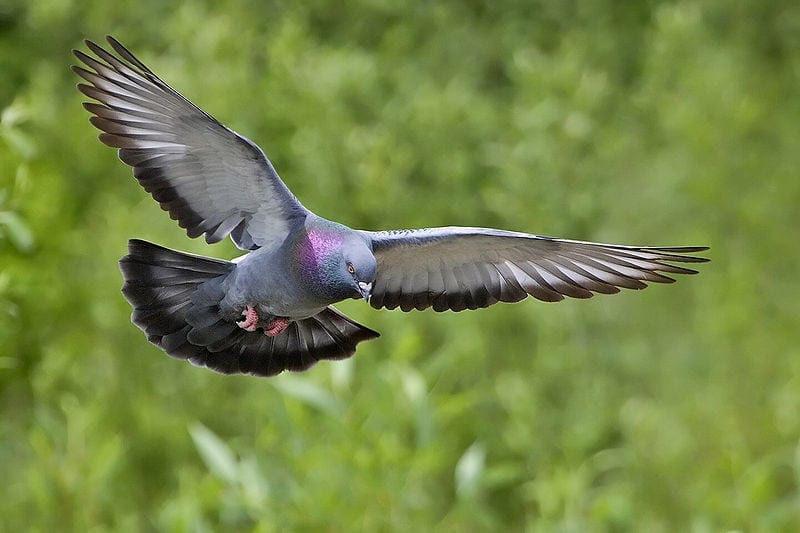Homing pigeons use roads where is possible to help find their way home

Homing Pigeons: Using Roads to Find Their Way Home

Homing pigeons, with their remarkable ability to navigate long distances and find their way back home, have always intrigued scientists and bird enthusiasts alike. While a multitude of theories have been proposed to explain their extraordinary navigation skills, recent research suggests that homing pigeons rely on roads to help guide them back to their roosting sites.
A study conducted by Oxford University researchers revealed that homing pigeons actively use road networks to navigate their way home. Pigeons’ navigation is closely linked to their ability to detect and follow familiar visual landmarks. By utilizing familiar roads, they can more easily recognize and track their position relative to their home loft.

But why do roads play such a crucial role in their navigation? Roads provide homing pigeons with a clear and distinct visual cue that is absent in open, unstructured landscapes. The linear patterns created by roads are easily discernible and serve as reliable guides for the birds. Additionally, roads tend to lead directly to human settlements, which often host pigeon lofts. This connection between roads and human habitats further enhances the pigeons’ chances of returning safely home.
Moreover, pigeons’ ability to utilize roads is not limited to simply following them. These birds exhibit an impressive understanding of the intricate road network. They make use of the various junctions and intersections to adjust their flight direction and head towards their desired destination. This dynamic navigation strategy allows them to overcome obstacles and take shorter, more efficient routes, ultimately ensuring a quicker return home.
Interestingly, it has been observed that homing pigeons have preferred roads that align with their flight paths. This preference suggests that they have a built-in mental map of their surroundings, enabling them to choose the most optimal route. However, certain factors can influence their selection, such as weather conditions or the presence of familiar landmarks along specific roadways.
The Oxford study also highlighted the significance of learning in homing pigeons’ navigation abilities. Over time, they become familiar with the road network as they repeatedly travel back and forth from their home loft. This familiarity helps them develop a strong mental representation of the paths they should follow, further enhancing their efficiency in returning home.
In conclusion, homing pigeons demonstrate an astonishing capacity to utilize road networks as an integral part of their navigation system. The linear patterns, visual cues, and direct paths that roads offer serve as valuable aids in their journey back home. By leveraging these man-made structures, homing pigeons showcase their remarkable ability to adapt to and thrive in their ever-changing environment.
Source: Telegraph
Tags
Share
Related Posts
Quick Links
Legal Stuff

